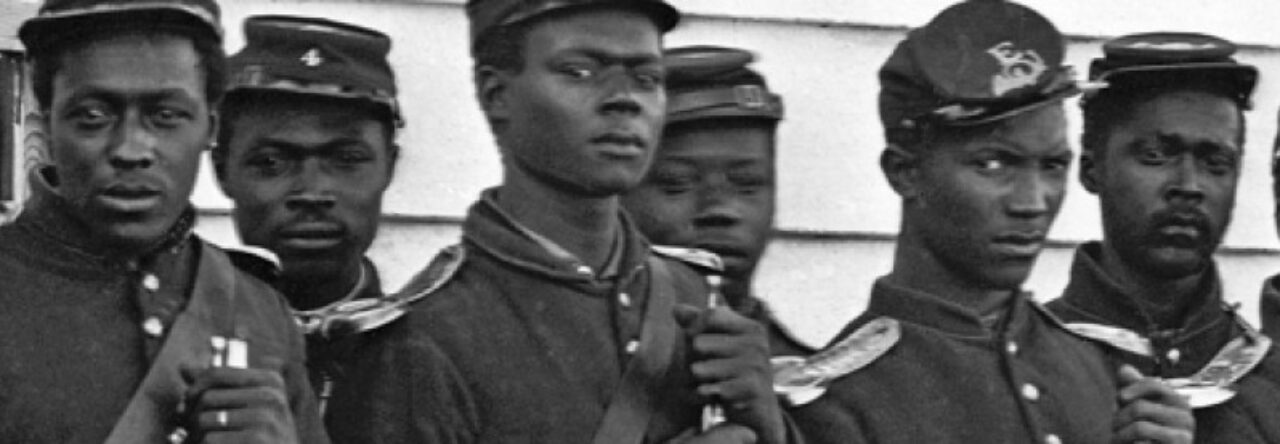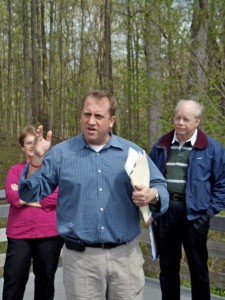It will be a bittersweet three days for me on June 4, 5 and 6, 2013 when I travel under the auspices of the Gilder Lehrman Institute of American History with K-12 educators from the Arkoma (OK) Teaching American History (TAH) grant to various battlefields and Civil War sites in West Virginia, Maryland, Pennsylvania and the District of Columbia. Bittersweet because despite what promises to be a terrific educational journey, this will be one of my last outings under this wonderful federal program, which has been zeroed out of the federal budget.
Since TAH is coming to a close, I thought it was appropriate to share the materials that I will be highlighting with the Arkoma educators online –offering a kind of summary and resource guide that helps capture some of what I have been doing on dozens of these trips over the last several years with grant groups from all over the country. I will highlight here materials relevant to our four key stops between June 4-6, 2013: Harpers Ferry National Historic Park, Antietam National Battlefield, Gettysburg National Military Park, and President Lincoln’s Cottage at the Soldiers’ Home.
Day One –Harpers Ferry
First things first. You’ll see Harpers Ferry spelled both with and without the apostrophe, but leaving out the apostrophe out is preferred. This is the place where John Brown led his famous (or infamous) raid in October 1859 that many argue was a critical turning point in the coming of the Civil War. During the first half of the nineteenth century, the town became a unique industrial outpost in western Virginia, best known for the federal armory and arsenal where various types of munitions were built and stored. That’s what made Harpers Ferry a target for abolitionist John Brown who hoped to use weapons seized from the armory to help support a massive effort to free slaves along the nearby Appalachian mountains. Brown’s capture, trial and execution riveted the nation and cast a polarizing shadow over the election of 1860. Later, during the Civil War, Harpers Ferry played a pivotal role in several Civil War campaigns, most notably during the Maryland invasion of September 1862.
The House Divided Project at Dickinson has created a host of free digital resources on Harpers Ferry, beginning with a large section in our research engine that includes dozens of historic documents, images and reference materials. Using a tool from Google called Sketch Up, we have created a set of 3D models of landmarks in Harpers Ferry. Some of these models are also featured in a Google Earth tour of Underground Railroad sites in the region that culminates at Harpers Ferry. The main blog section of our project, entitled “Blog Divided,” aims to create short posts that provide a quick guide to teachable topics and resources from the Civil War era. There are a number of helpful Blog Divided posts about Harpers Ferry, see especially the ones on digital resources about John Brown’s raid, southern newspaper reaction to the raid, the escape of some of the raiders into Pennsylvania, Brown’s execution, the Senate investigating committee which followed up on the raid, the 1861 military campaigns, and the 1862 campaign.
When I bring educators to Harpers Ferry, I usually distribute two handouts. The first offers a comparison of John Brown and Abraham Lincoln. It forces us to consider both how they were different but also how they were alike and it raises the larger, philosophical question about when Americans consider violence to be legitimate. The second provides an excerpt from Brown’s statement at his sentencing. This one offers insight into Brown’s eloquence and suggests that teaching him as some kind of insane terrorist underestimates his influence in antebellum America, relegating him to an extremist sideline that –perhaps– he only partly deserved. Again, the goal with this exercise is not to bully students into moral judgments but rather to force them to consider moral complexity as they decide for themselves about right and wrong.
Day One –Antietam
The September 17, 1862 battle at Antietam Creek or Sharpsburg remains the bloodiest single day in American military history. Few experiences are as somber as visiting this battlefield site and imagining the carnage that occurred over the space of that bloody day. The National Park Service website on Antietam is especially useful for educators and includes a timeline, gallery of historic photographs, and first-rate curriculum materials including lesson plans, primary source packets, and various types of worksheets. The best site for student research papers, however, is most certainly Antietam on the Web, which features links to all 315 of the After-Action Reports published in the Official Records.
But for most classroom teachers, Antietam offers perhaps the Civil War’s most teachable turning point. James McPherson has a terrific lecture on Antietam, videotaped in 2002 and available from the Gilder Lehrman Institute multi-media channel, explaining why the battle should be taught as a pivotal turning point of the war. The 45-minute lecture can be supported quite nicely with a short essay on the same topic from McPherson that is also available on the Gilder Lehrman website.
The House Divided Project contains a number of documents, images and maps related to the 1862 invasion of Maryland, but perhaps the most classroom-friendly item on the subject is a student-produced documentary short film about a northern family whose husband and father was lost at the Battle of Antietam. To view, “Do They Miss Me at Home?” by David Gillespie (Dickinson College, Class of 2011), click on the YouTube video below, or to read more about the Colwell family, visit Cumberland Civil War.
Day Two –Gettysburg
No battle has endured in American memory more than the Battle of Gettysburg (July 1-3, 1863). It was the largest engagement of the Civil War and perhaps the most important. I add the caveat “perhaps” because despite all of the talk about Gettysburg as a turning point, I’ve always been inclined to view that claim with skepticism. The idea of a “turning point” is one that marks a decisive change. It’s not always clear to me that Gettysburg marked such a change, despite its importance. Throughout my travels with educators to Civil War sites, such as Harpers Ferry, Antietam, Gettysburg and elsewhere, I always like to return to this notion of “turning point” to see if each example adds depth to their understanding of how to present this kind of complicated military and political narrative in a classroom setting.
To see how I try to present this kind of multi-dimensional story at Gettysburg, you should consult the teacher’s videotaped tour of the battlefield that I created in 2012 with Gilder Lehrman education coordinator Lance Warren and which is available here under the “Gettysburg Virtual Tour” tab in this website, complete with several short videtotaped segments and accompanying handouts. For those traveling from Arkoma on June 4-6, this virtual tour will offer both preview and postview and might help provide a series of extension classroom exercises based on our work together in the field.
Day Three –President Lincoln’s Cottage
Abraham Lincoln spent over a quarter of his presidency in residence not at the White House but at the Soldiers’ Home, nearly 3 and 1/2 miles away in the northwestern section of the District of Columbia. It was at his cottage at the Soldiers’ Home that Lincoln developed his emancipation policy in 1862 and where he planned his reelection campaign in 1864. The place offered a unique working retreat for the busy president.
The National Trust for Historic Preservation spearheaded the restoration of Lincoln’s cottage at the Soldiers’ Home and opened it to the public in 2008. They maintain a terrific website, full of resources for educators. I wrote a book about Lincoln’s experiences at the Soldiers’ Home called, Lincoln’s Sanctuary: Abraham Lincoln and the Soldiers’ Home (Oxford, 2003), some of which is available at Google Books, but all of which can be purchased (with royalties returning to the National Trust) from online booksellers such as Amazon. Or you can view videos about Lincoln’s experiences at the cottage from C-SPAN, including a documentary film tour and also an interview with me from Booknotes.
When I bring educators to the Soldiers’ Home, I usually emphasize ways to use the story to teach Abraham Lincoln and his family, including wife Mary and sons, Robert, Eddie, Willie, and Tad, as a representative one for nineteenth-century America. Here is one handout which I use to help start that discussion. Another place to begin that conversation, however, might be with the new “Lincoln” movie from Steven Spielberg. We have created an Unofficial Teacher’s Guide to that wonderful (but sometimes historically challenged) film, which you might find especially useful for what it reveals about the historical realities behind the portrayal of the Lincoln family.
Conclusion
This is only a sampling of the topics that I plan to discuss with the educators from Arkoma. I hope those who participate in that trip and anyone who’s attended previous TAH field studies such as the ones I’ve outlined above, will feel free to post comments here, adding their own perspectives, questions and suggestions.


Karen Page
Can’t wait to see Harpers Ferry and to hear your insight about how to teach John Brown. I usually pose the question “was John Brown a hero, martyr, or madman?” My students are good to provide rich discussion so I look forward to hearing what you have to say!